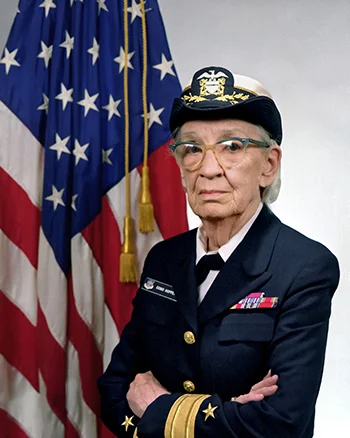Grace Brewster Murray Hopper was a woman pioneer in the computer science industry as well as a respected naval officer. As one of the first three modern computer programmers, she is best known for her contributions to the development of computer languages. Grace Brewster Murray was born in New York City and went to private school before graduating Phi Beta Kappa from Vassar College in 1928, receiving her master's degrees from Yale in 1930, and earning her Ph.D. in 1934 also from Yale all in mathematics and physics.
Hopper joined World War II as part of the U.S. Naval Reserve in 1943 after the pearl harbor bombing despite initially being rejected due to her age and small build. She was assigned to Harvard's Bureau of Ships Computation Project where she programmed the Mark I, one of the earliest electromechanical computers. Due to the relationship between the military and the early computer industry, Hopper worked on top-secret calculations including running numbers used in developing the plutonium bomb.

After the war, Hopper continued working at Harvard, now as a research fellow in engineering science and helped developed the Mark II and Mark III. In 1945 the Mark II malfunctioned. After taking it apart Hopper and her team discovered a large moth inside the machine. This event led to Hopper starting to use the term 'bug' to mean a fault in not just machinery but a computer problem in general.
Over the rest of her career, Hopper worked on a variety of historic projects that have established the basis of what computers and programming are today. These include working on the UNIVAC I (Universal Automatic Computer), the first compiler, and the first programming language with english like commands.